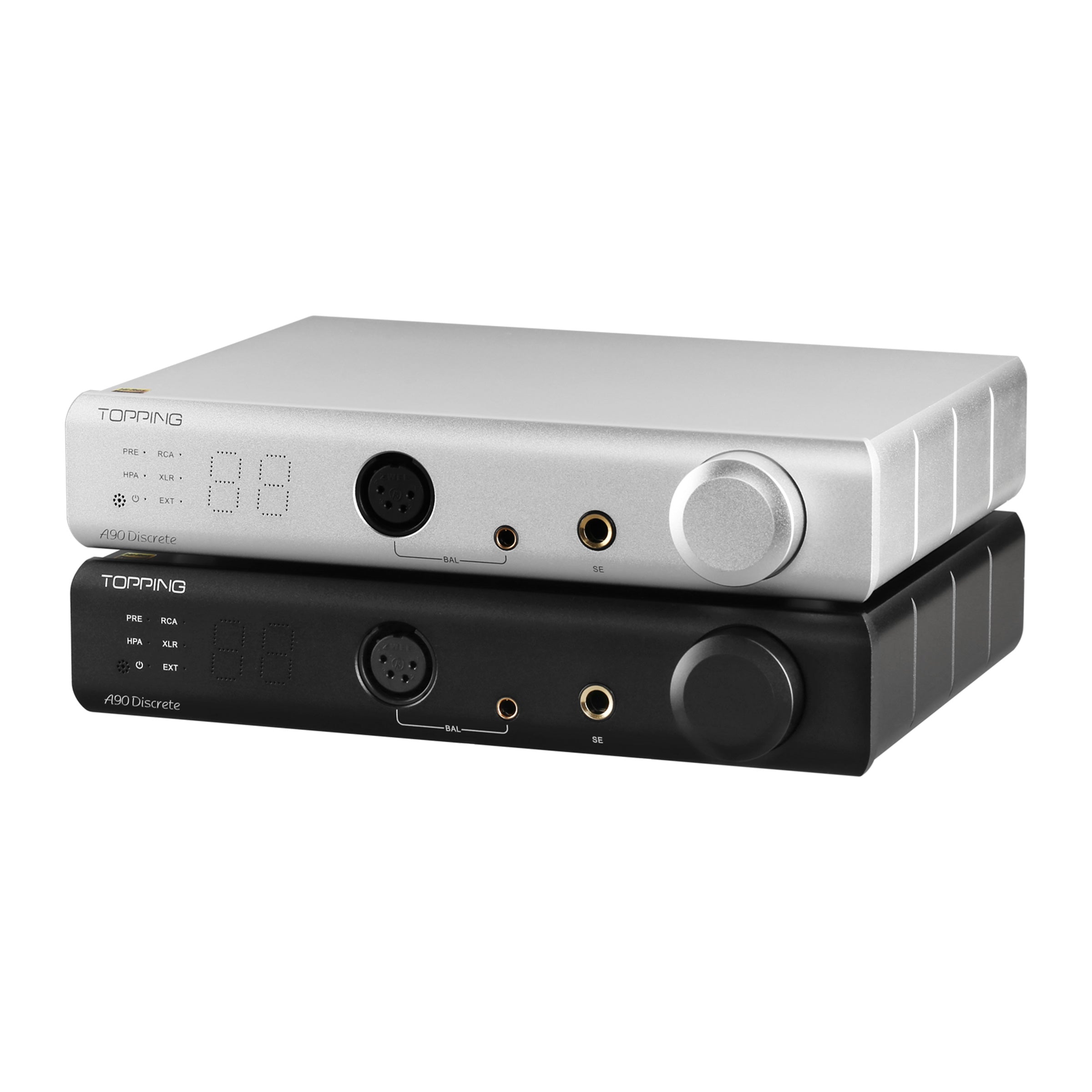
TOPPING A90 vs TOPPING A90 Discrete Comparison Chart
The upgrading of a classic is an exciting but potentially confusing event. Everyone loves quality of life improvements, but no one likes having to hack through a jungle of specs. We’ve created this comparison chart to help you quickly and easily judge the differences between the classic A90 and the upgraded A90 Discrete (AKA the A90D). For each category, we’ve highlighted the winner in Apos red.
 |
 |
|
|
Price |
$499 |
$599 |
|
Dimensions |
8.7 x 6.2 x 1.7” |
8.7 x 8.4 x 1.7” |
|
Inputs |
|
|
|
Outputs |
|
|
|
Amplifier |
Nested Feedback Composite Amplifier |
Discrete Nested Feedback Composite Amplifier |
|
THD+N |
<0.00006% |
<0.000055% |
|
SNR |
145dB |
145dB |
|
Gain Settings |
3 |
2 |
|
Output Power |
7600mWx2 @16Ω |
9800mW x2 @16Ω |
|
Output Impedance |
<0.1Ω |
<0.1Ω |
|
R2R relay volume control |
No |
Yes |
|
Output voltage |
49Vpp@ balanced, 25Vpp@SE |
49Vpp@ balanced, 25Vpp@SE |
|
Ground loop noise terminator |
No |
Yes |
|
Pre-amp functionality |
Yes |
Yes |
|
12V trigger interface |
No |
Yes |
|
Output volume memorization |
No |
Yes |
|
Remote control |
No |
Yes |
|
Front panel volume display |
No |
Yes |
Takeaways
The A90D is an upgrade across the board. It’s more powerful, less distorted, and includes some great quality-of-life improvements. A front panel volume display and remote control allow you to control the A90D from the comfort of your couch. A ground loop noise terminator ensures clean output no matter how long your audio chain becomes. Output volume memorization allows you to dial in on the right level for you–and keep it there for next time.
There is one place where the original A90 seems to outpace the A90D, and that’s its gain settings. It's worth explaining why that isn't actually the case. The A90 includes three gain settings (-9.5dB/ 0dB/ +9.5dB), while the A90D only includes two (0dB/ +9.5dB). At first blush, this might seem like a huge oversight by TOPPING, but in actuality it’s not–and it all has to do with the type of volume potentiometer used. The A90 uses a standard volume potentiometer. These often suffer from channel imbalance at low volumes, which makes listening to sensitive IEMs a challenge. To overcome this issue, TOPPING introduced a low gain setting on the A90, allowing the user some additional real estate on the volume knob for dialing in a suitable volume that doesn’t result in channel imbalance. The A90D, on the other hand, uses an R2R volume controller. These offer massive advantages over standard potentiometers, like outstanding THD+N, SNR, and extremely well-balanced channels. Thanks to the A90D’s R2R volume controller, a low gain setting on the A90D isn’t necessary.
That's it! We hope this helped and that you're as excited about the A90D as we are. Please reach out to our support team if you have any questions.


